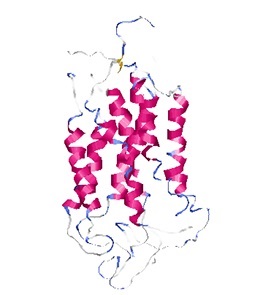Olfactory Receptor DataBase (ORDB)

| FAQs | Links | Resources | Users | Versions |
Olfactory receptors (ORs) are the largest family in the genome, and the first of a widening range of chemosensory receptors (CRs) in other chemosensory organs. ORDB began as a database of vertebrate OR genes and proteins and continues to support sequencing and analysis of these receptors by providing a comprehensive archive with search tools for this expanding family. Because of the associated growth of interest in other CRs, the database has grown over the years to include a broad range of chemosensory genes and proteins, that includes in addition to ORs the taste papilla receptors (TPRs), vomeronasal organ receptors (VNRs), insect olfactory receptors (IORs), Caenorhabditis elegans chemosensory receptors (CeCRs), fungal pheromone receptors (FPRs) [these are informal abbreviations for tracking in ORDB, pending development of consensus nomenclature by the field].
currently houses chemosensory receptors representing the work of 135 laboratories worldwide
ORDB contains public and private sections which provide tools for investigators to analyse the functions of these very large gene families of G protein-coupled receptors. It also provides links to a local cluster of databases of related information in SenseLab, and to other relevant databases worldwide.
ORDB Scientific Coordinator: Chiquito Crasto, Ph.D.
If the use of any of the resources in ORDB results to a publication we request that you use the following citation format when referring to ORDB.
(1) Crasto C..,Marenco L., Miller P.L., and Shepherd G.S. (2002)
Olfactory Receptor Database: a metadata-driven automated population from sources of gene and protein sequences.
Nucleic Acids Research1:354-360
(2) Crasto, C. , Marenco L., Skoufos E. Healy M.D., Singer M.S., Nadkarni P.M., Miller P.L. and Shepherd G.S.The Olfactory Receptor Database, is publically available at https://senselab.med.yale.edu/ORDB/